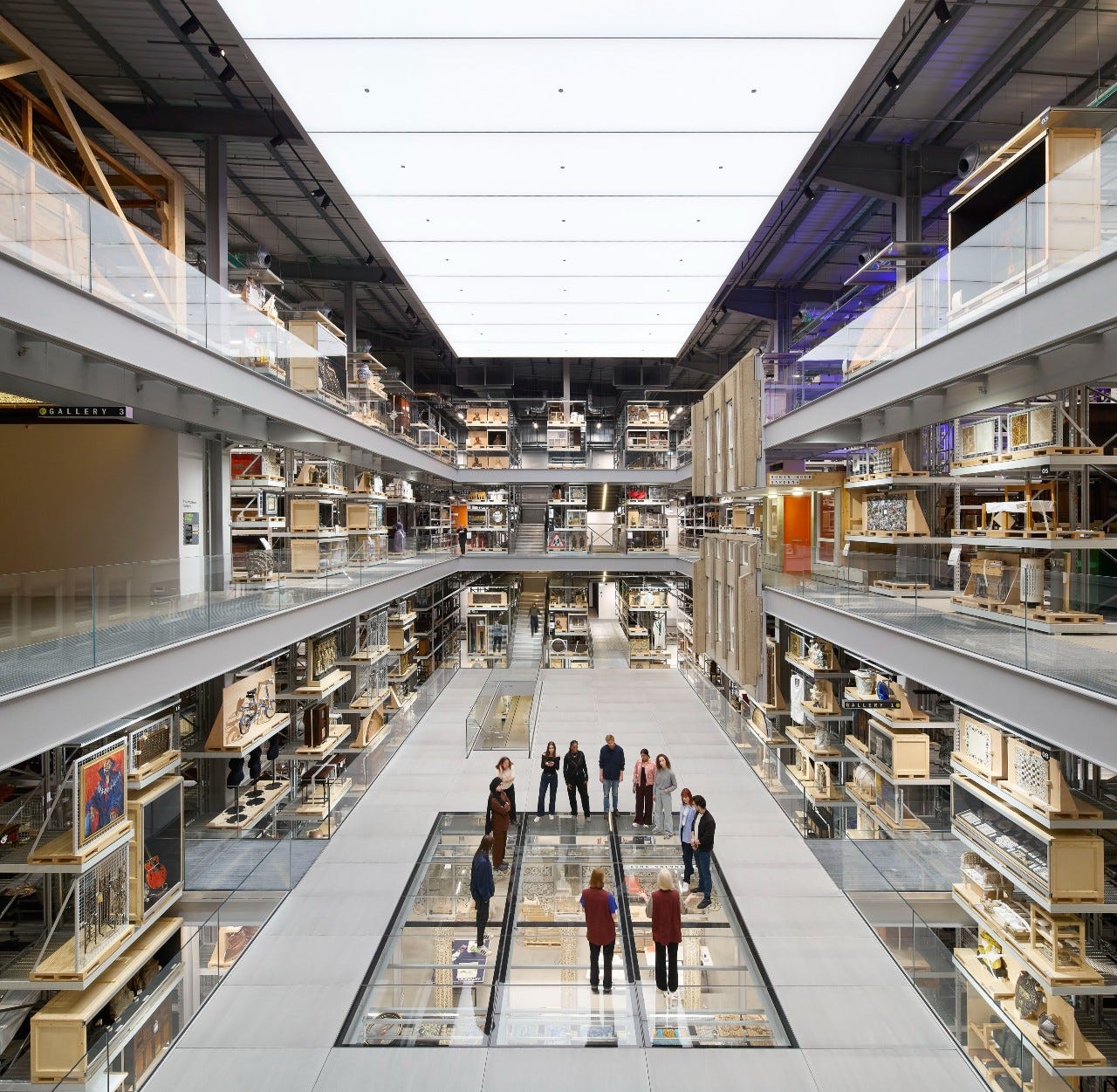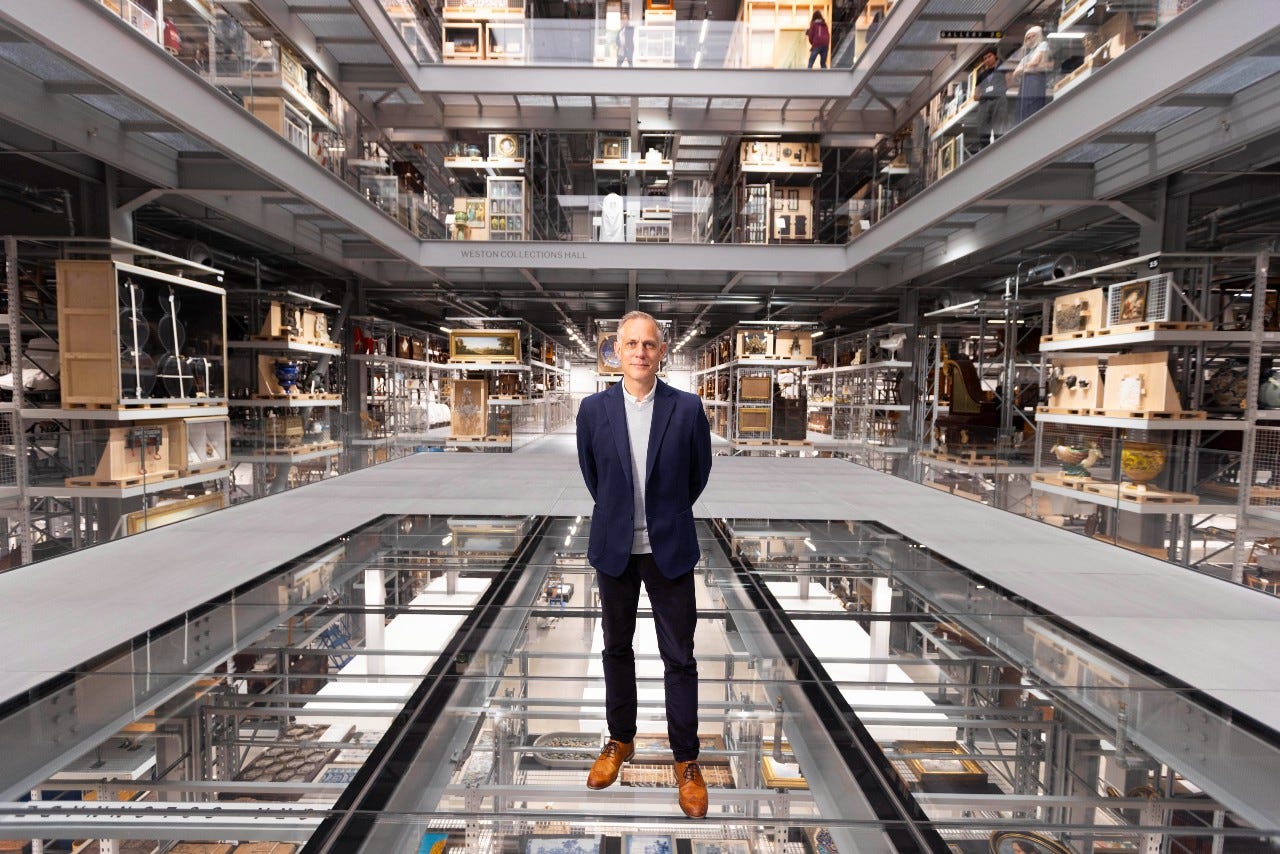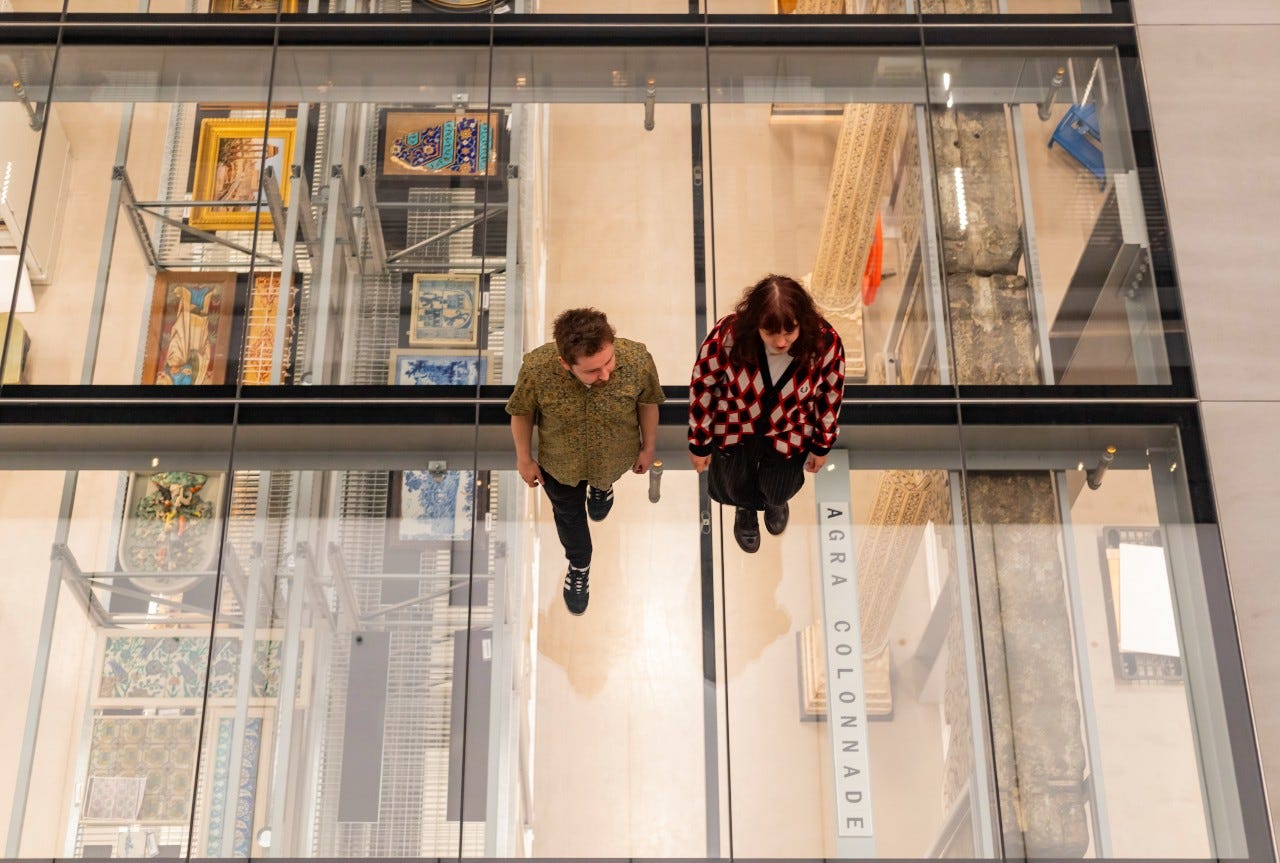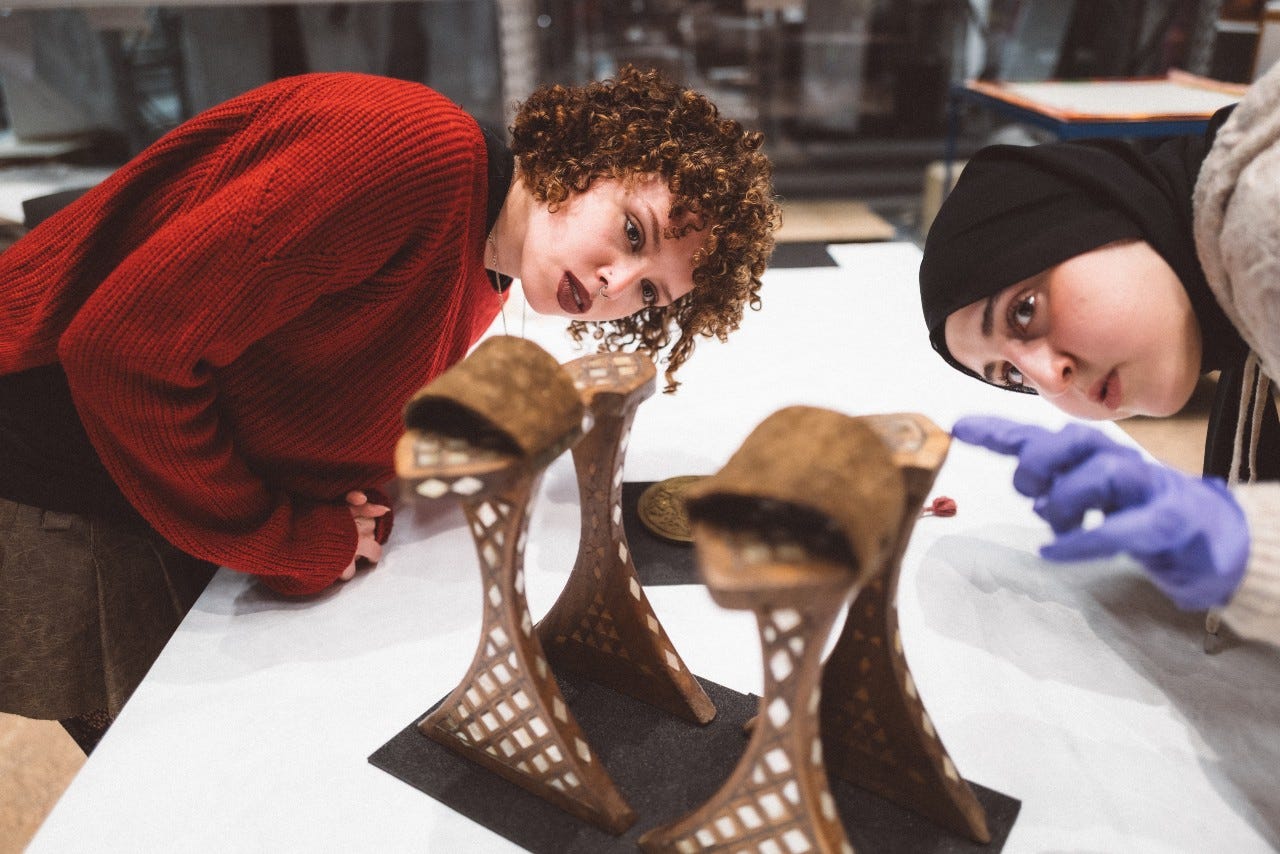Wednesday 11 June 2025 | the Big Interview from the world of museums, galleries, heritage and art
Hello.
Welcome to the revamped of maxwell museums.
As I revealed recently, these editions are having a shake-up.
Previously, I brought you a big interview and an opinion piece in one email every fortnight (sort of). I’m now splitting thse into separate editions, and bringing them to you in alternate weeks.
One week you’ll get an email that solely focusses on an in-depth interview with an important leading figure — today’s debut is the perfect example. The following week it’ll be an expanded opinion piece by a guest writer. So yes, that means the mid-week editions will be coming to you weekly from now on.
The opinion articles will now also run to 500 words — up from 250. Still digestible, but with a bit more space to get to the heart of what matters. And alongside these opinion articles will be a longer Hot List of my curated round-up of what’s new to see, do, watch, read and more.
Rest assured, the Friday news round-ups remain unchanged. Just remember I’ll now be landing in your inbox every Wednesday as well as every Friday.
With housekeeping done, let’s dive in!
maxwell
— Want to sponsor a future edition and get in front of 5,300+ readers? Email me at [email protected] and let’s make it happen
The V&A East Storehouse has been open just over a week. But it might have a claim to already be the most recognisable museum in London, such has been the vast coverage of its unveiling. Images of that central lobby with its glass walkways and metal racks of objects have been everywhere.
But… is it even a museum? Well, yes and no.
To recap: Storehouse is a vast, purpose-built, open-access storage space where the V&A is keeping 250,000 items from its world-class collection. Housed inside the former Media Centre of the London 2012 Olympic Games in the Queen Elizabeth Olympic Park in Stratford, it is nothing like its South Kensington sibling. No narrative, no route, barely any curation. It’s a warehouse moonlighting as visitor attraction.
The reviews? Sparkling. "The wonder of the Storehouse is the way it makes you feel close to art, as if you owned it" the Guardian said in a five-star review. The Times said it’s “amazing” and “feels quietly radical.” The FT thinks “it may prove to be as important to the museum as Tate Modern was 25 years ago.”
But, there’s more to come.
Not only will there be more unveiled at the Storehouse later this year in the shape of a dedicated centre to David Bowie’s archive, but next year the V&A will be opening ANOTHER, BIGGER (ACTUAL) museum, just down the road.
To delve into this exciting new chapter for the Victoria and Albert Museum, my interview today is with Tim Reeve, the V&A’s Deputy Director and Chief Operating Officer. Not only did he conceive of the Storehouse, he’s led its development over the past decade.
I was keen to ask big questions of the museum’s big Stratford projects. After all, the V&A receives a huge amount of public money. So here we get into everything from Christian Dior dresses, to business models, and whether — in the age of ‘immersive experiences’ — objects are actually still a draw?
Well, I always thought this moment would eventually arrive — and to see visitors milling around V&A East Storehouse after nearly 10 years of incredibly hard work from many people across the V&A is an utterly joyful experience — but it’s been a rollercoaster.
That made the opening weekend particularly special, of course, and we welcomed over 6,000 visitors across the Saturday and Sunday which really put our plans to the test.
Storehouse also began with a major challenge, when it was confirmed by DCMS [Department of Culture, Media and Sport] in 2015, that Blythe House was to be sold for redevelopment, and that the V&A, the British Museum and Science Museum Group would need to find new homes for their stored collections.
It didn’t seem like a good option to me to replicate the inaccessibility of Blythe House by relocating to an isolated facility in the countryside, because if you have to go to the considerable trouble and cost of moving a collection of this size and importance, I wanted to ensure we did something transformative and radical in designing their new home.
The Collection Move Team did an extraordinary job in successfully navigating the biggest logistical challenge in our history, and of course the Project Team had to meet the challenge of constructing Storehouse in the teeth of a pandemic, so a hugely complex project to steer, but we had a big vision to create a new type of experience to get visitors closer to their national collections, and last weekend, and the response from visitors, felt like a real validation of that ambition.
The response from critics and the public alike has been overwhelming — really more than we could ever have hoped for — and testament to the commitment, expertise and tenacity of colleagues right across the V&A.
You never assume that everyone is going to feel the same way you do about a project, you never take it for granted, so there is a great sense of both relief and pride in seeing such an ambitious project meet its public.
I’ve really enjoyed eavesdropping on the visitors’ conversations as they navigate Storehouse — for that very immediate reaction — but the architectural and museological shift that we’ve tried to make with Storehouse is critical.
At the V&A, we’re always conscious that our collection has been developed over time as a creative sourcebook that should be made accessible to the public to inspire creative practice. That’s our founding mission.
V&A East Storehouse results from a classic case of necessity meeting opportunity. The sale of our previous storage facility at Blythe House felt like an existential moment, but we quickly moved past seeing it as a problem and began to realise we were faced with a generational opportunity to revisit our radical roots.
We took inspirations from lots of organisations large and small, such as the Boijmans in Rotterdam as an example of a visible storage experience at scale, Luce Centers in North American Museums, and of course smaller institutions across the UK like the Museum of Making in Derby and Glasgow Life’s work at Kelvin Hall and through the Glasgow Museums Resource Centre.
But, we also thought that, through Storehouse, we had a responsibility and the chance to go further, to try and effect a leap forward in museology and try and invent a new typology for museum-making.
Time will tell if we’ve succeeded, but sometimes larger institutions need to take some carefully calculated risks.
The short answer is that it is a very significant institutional undertaking, requiring great skill, organisation and endurance.
The move itself took only 12 months, but that was only possible because of the years of preparation from the Collections Move team, in condition checking, rehousing, conserving, documenting, photographing, digitising, barcoding and packing a collection of enormous scale, but also huge diversity; objects of different shapes and sizes, and material types. From large pieces of furniture to fashion, tiny dress pins and jewellery, poison arrows, fragile photographs and other light sensitive objects, monumental rolled textiles, and everything in between.
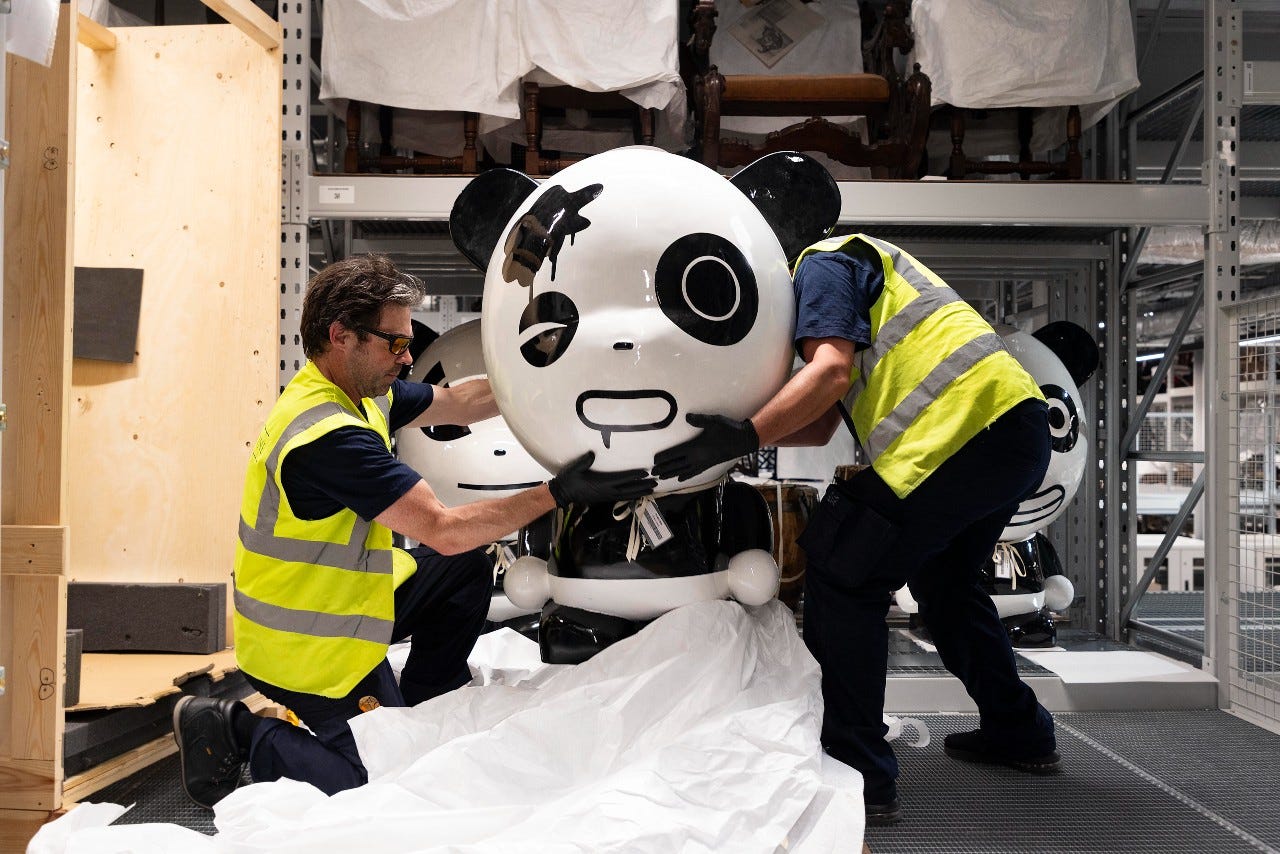
Because of the nature of Blythe House as a building, we were only able to facilitate maybe 3,000 appointments a year to our collections and archives, and really only for established researchers and practitioners.
The Order an Object service is designed to offer the opportunity for personal appointments with objects to anyone, whether you’re an established designer or someone local to Storehouse exploring a new hobby or someone working on their school homework. The idea is that you can make an appointment to see up to five objects — selecting from almost everything held at V&A East Storehouse, using a very simple new online booking portal — and you can bring along a friend to see the objects up-close either in our Study Centre or in situ for larger items.
Whether you’re researching a project, looking for creative inspiration, or to see what’s usually stored away, this is our new object on-demand experience, on a scale not seen anywhere else, to facilitate meaningful access.
To deliver this we have recruited an entirely new team of Collections Access Officers, mostly from the local area, many of whom had never worked in museums or with collections before. They have been through a robust training process and are responsible for processing bookings, accessing objects from the stores and bringing them to the study centre for visitors to view, or taking visitors to the stores if objects are too big to be removed, and providing meaningful access and a fantastic experience to all who book.
So far, over 450 appointments have been booked, for over 2,000 objects — and counting, with a significant ‘bounce’ when we first launched the service on 13 May and again when we were live on the BBC’s The One Show on 29 May.
Currently the most popular item ordered is the 1957 Christian Dior evening dress, Le Ligne Libre, made in the final year of Christian Dior’s life, which has been ordered six times. Other popular choices include 14th century and contemporary ceramics, a 17th century carpet from Iran, 1930s wedding dresses, Julia Margaret Cameron photographs, and a 1954 pink silk taffeta evening dress by Cristóbal Balenciaga.
Visitors cite lots of different motivations for their choices, from seeking inspiration for their wedding dresses to a birthday treat or simply wanting to see beautiful things up-close, alongside specific research requests.
There needs to be room for both, but objects are definitely not losing their relevance.
I always feel that the best way to secure our national collections is ensure they remain dynamic and relevant, they are accessible, that they can be used and deployed, that visitors are able to better understand how and why we care for them, and find their own inspiration from them.
V&A East Storehouse is predominantly an analogue experience, where objects take centre stage, and visitors are encouraged to really engage with the object’s texture, materiality, physicality, artistry and craft. We do have a mobile experience, called Look Up, which offers more in-depth information about objects and displays, but it’s mostly a browsing experience onsite. Objects are most definitely our USP — and you can get even closer to them through Order an Object.
The David Bowie Centre will be a free to access home for David Bowie’s Archive, recently acquired by the V&A through the generosity of the David Bowie Estate, the Blavatnik Family Foundation and Warner Music Group.
It’s part of the wider V&A East Storehouse experience, and is designed to unpack what an archive is, and to give a rotating look at some of the 90,000+ items from David Bowie’s archive. But not everything can be displayed at once, and this won’t be the David Bowie Is… exhibition part two. It'll be free and ticketed so we can manage capacity in the space.
The David Bowie Centre is split into three separate zones, with a mix of small, curated changing displays and installations unpacking the archive, David Bowie’s creative process, and his continued impact and contemporary resonance. There will likely be about 100-150 items from the archive on show at a time. There will also be quieter study areas, where you can book to view items from Bowie’s archive on your own. You’ll be able to see things like Bowie’s iconic costumes, musical instruments, make-up charts, stage models, Oblique Strategies card decks, personal notes, writings, lyrics and music, sketches, designs and unrealised projects.
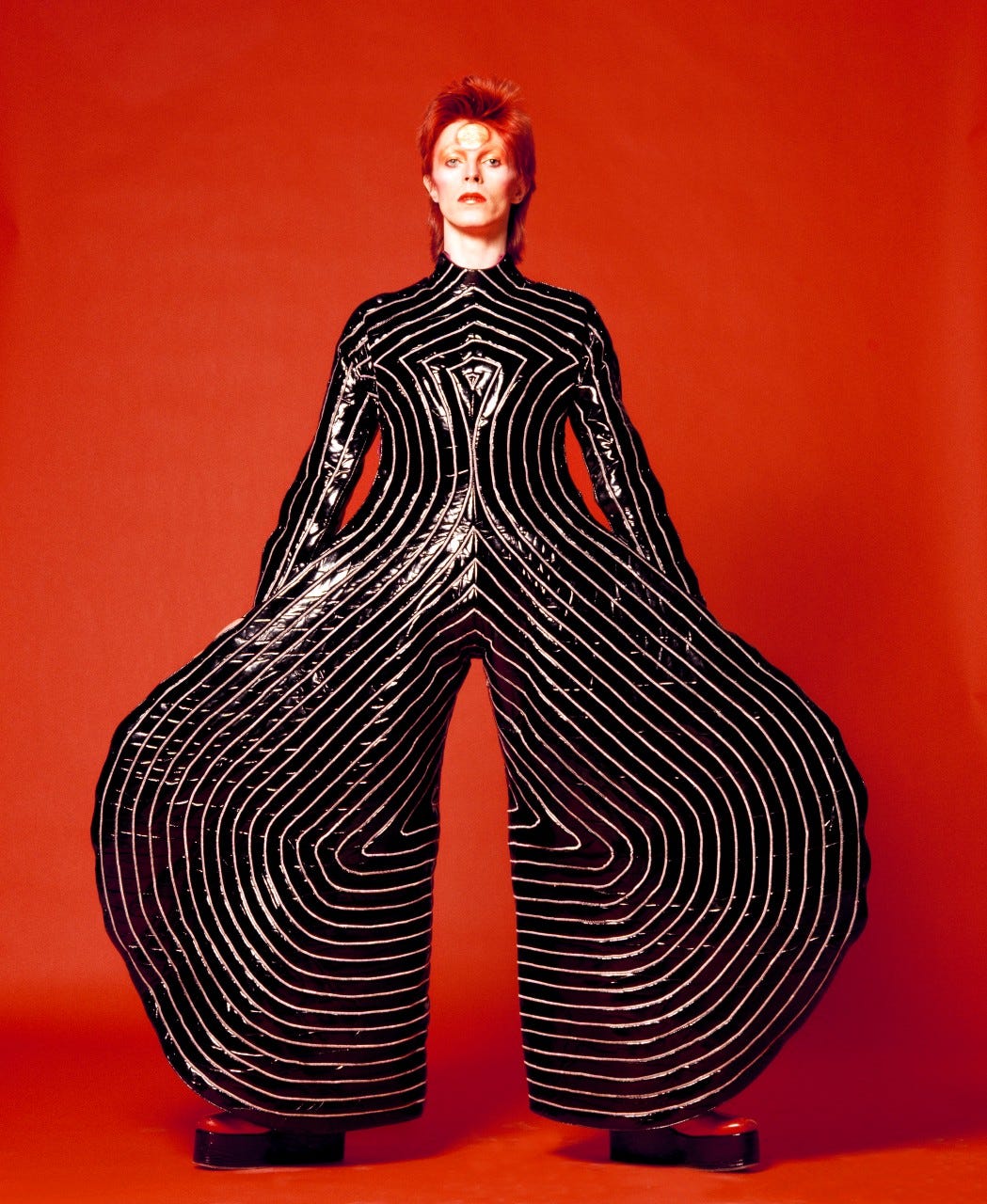
Yes — we’re looking forward to opening in spring 2026.
Our two sites are intended to be complimentary to each other, kind of like non-identical twins, which together give you a 360-degree view of museum practice.
You might want to think of V&A East Storehouse as our studio space, where we’re experimenting, researching and taking you behind the scenes of what is, at its heart, a working building.
V&A East Museum is more of a stage — a more typical museum experience of permanent gallery spaces and temporary exhibitions, shops and a restaurant, displaying objects that have been prepped down the road at V&A East Storehouse.
We’re bringing both sites together through a central theme of making and will have a creative live and commissions programme running across both. You can experience both sites together in one day, or each on their own. It’s up to you.
We wouldn’t have gone into this without developing a robust business case and a financial package and uplift in grant-in-aid to support the operation of two new sites.
We also have a strong business plan for all our commercial activities — most of which will be visible at V&A East Museum next year — as well as support from individual donors to help run some of our programmes.
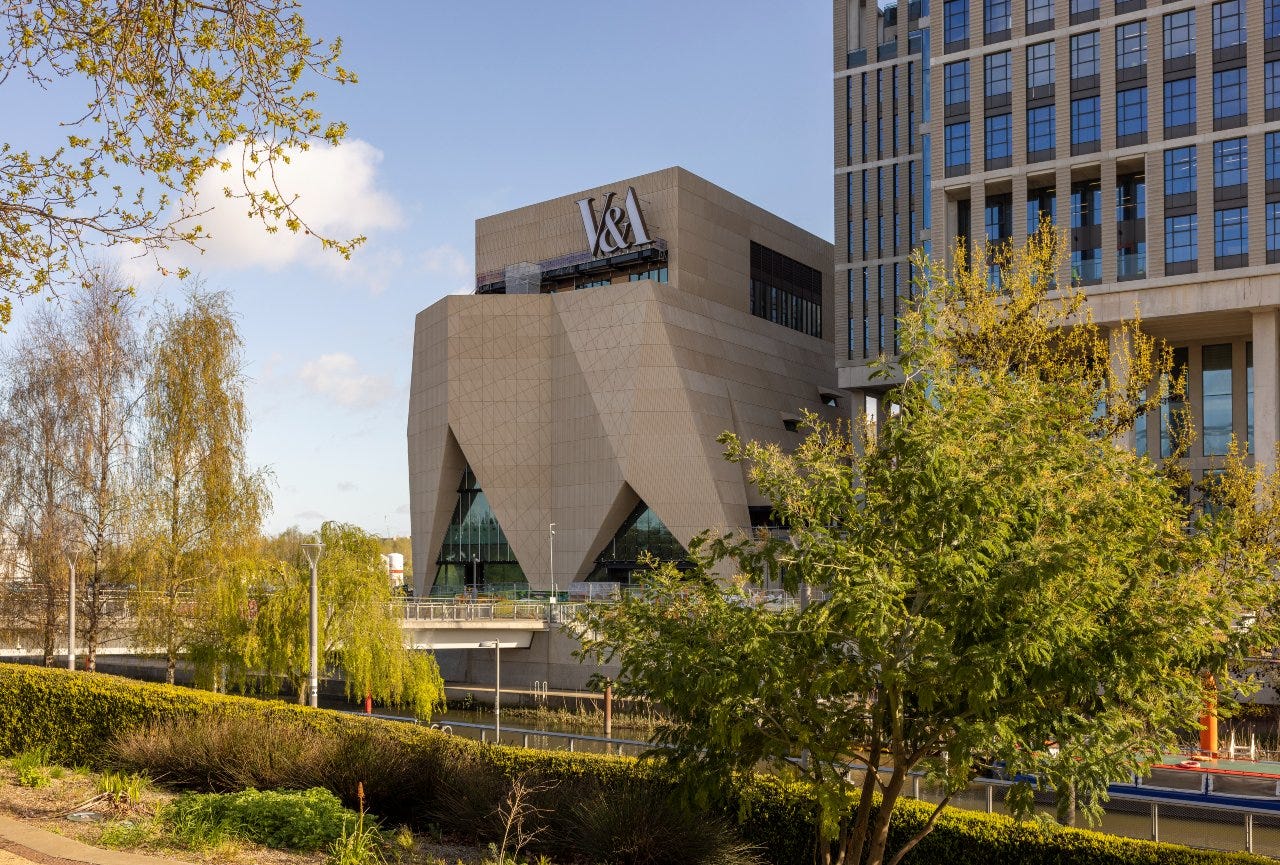
Fundamentally all our sites look to take an audience-centred approach.
We wanted to build on east London’s existing creative heritage and be a meaningful part of the Olympic Legacy, creating two new world-class museum experiences in a part of London that has been traditionally underserved by national institutions.
Empowering young people and opening pathways into the creative industries is fundamental to V&A East. To date, we have engaged with over 30,000 local people and creatives through consultation, our flagship Your Collection: V&A East in Schools programme, Youth Collective, career and mentoring initiatives, pre-opening events and activities, artist retreats, and drop-in making sessions.
V&A East’s Youth Collective — a rolling 10-month paid opportunity for east Londoners between 16 and 24 that helps participants develop their own creative practice — is now in its fifth cohort. The Youth Collective plays a key role in shaping V&A East, from programming to gallery design, developing a manifesto for the V&A East brand, interviewing consultants and co-producing displays and creative commissions for V&A East’s two sites.
Like many people, I’m aware of the speculation.
Finally, there are 100 new mini-displays for visitors to Storehouse. Any favourites that visitors should head to first?
It’s very difficult to have a favourite, and of course everything ‘on display’ at V&A East Storehouse needs to be read as provisional, but I do find the display of four Yemeni funerary stelae, which we are looking after on behalf of the Yemeni government until they deem it safe to return them, extremely moving.
They are a very powerful example of the contemporary fragility of some ancient works of human ingenuity.
— Thanks for reading to the end! If you found today’s edition useful, please donate to support all my future interviews and newsletter editions. Every penny makes a difference!
